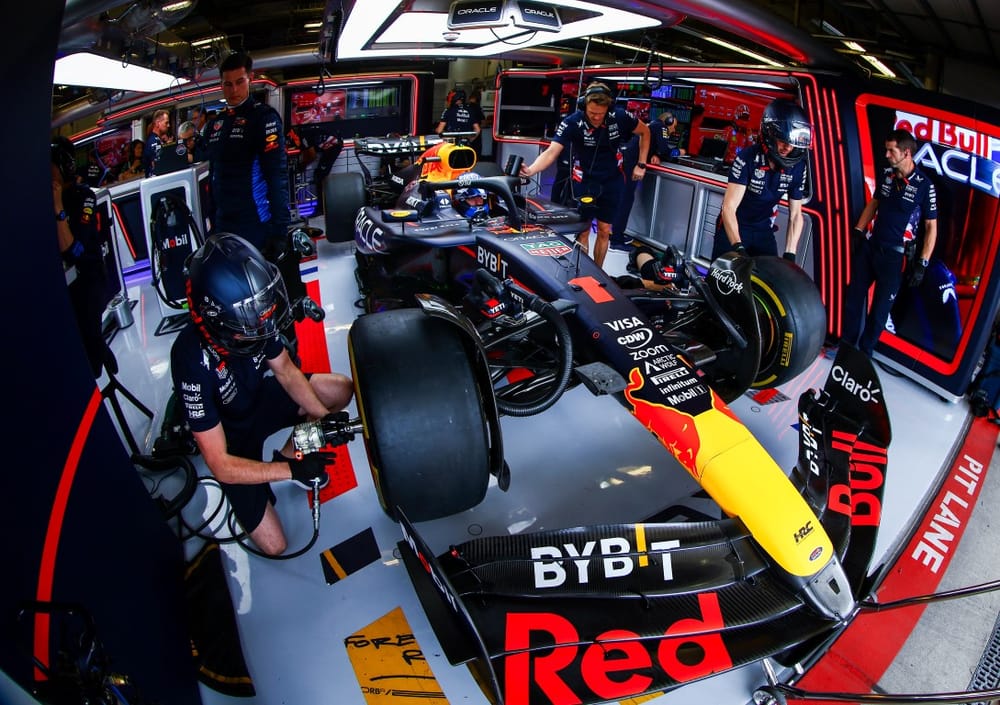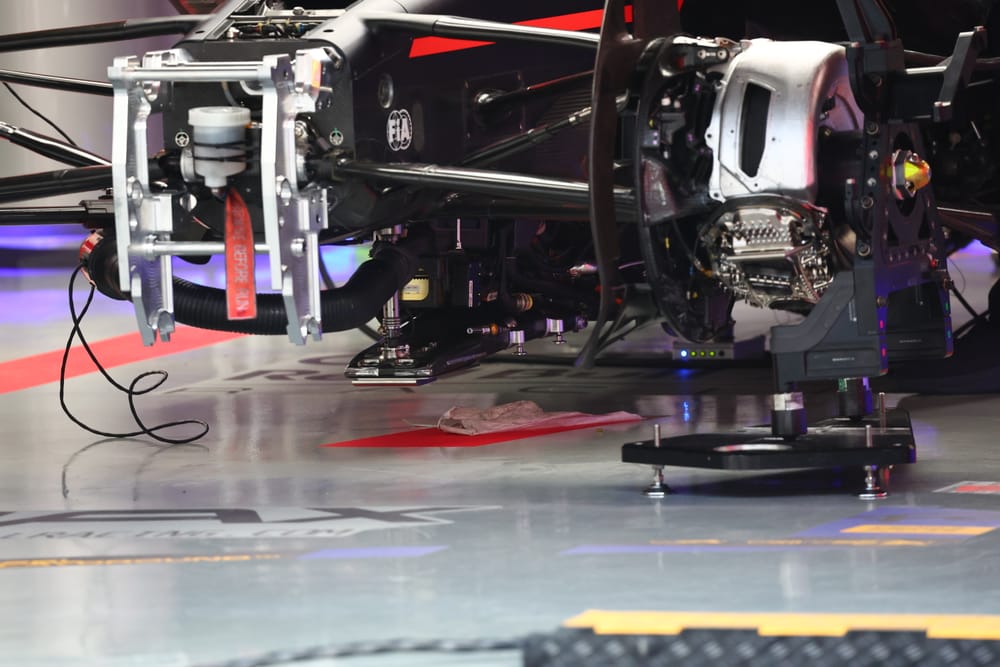Up Next

Red Bull is at the centre of Formula 1’s latest technical controversy, admitting that it does have a device that can adjust the height of the ‘bib’ at the front of the floor but denying that it was ever – or could ever have been – used to make changes during parc ferme.
However, I would say that Red Bull having designed something that can contravene the regulations, whether used in that way or not, means that the thought pattern was potentially to delve into the grey areas within the regulations.
All teams have versions of this set-up tool, but Red Bull's is unusual given suggestions it is possible to adjust without outside tools and without disassembling parts of the car. While there is a clear performance advantage from optimising the bib height, Red Bull says it cannot be altered while the car is assembled.
However, the big question is the exact meaning of assembled - and whether there could be opportunities to make changes when the car is not fully assembled at times under parc ferme. After all, parc ferme means you can’t change the set-up or parts, but doesn’t in practice mean you can’t touch the car in any way.
We need to know if this was an accidental option coming from a design concept that wasn’t meant to allow adjustment, or if it was specifically designed to allow adjustment outside of the acceptable regulations. After all, there are significant potential performance benefits, and there are various ways this could be taken advantage of.
The FIA’s load test for the front of the floor applies the force upward. To reduce chassis damage if the drivers go over one of those stupid yellow sausage kerbs, there is a preloaded spring and damper unit mounting for the bib. The preload can be adjusted to allow them to pass this test easily enough, yet for that preload to still be broken with kerb impact. It's a very complicated and heavy system to simply reduce chassis damage if a driver makes a mistake and because of this it opens the door to different interpretations.
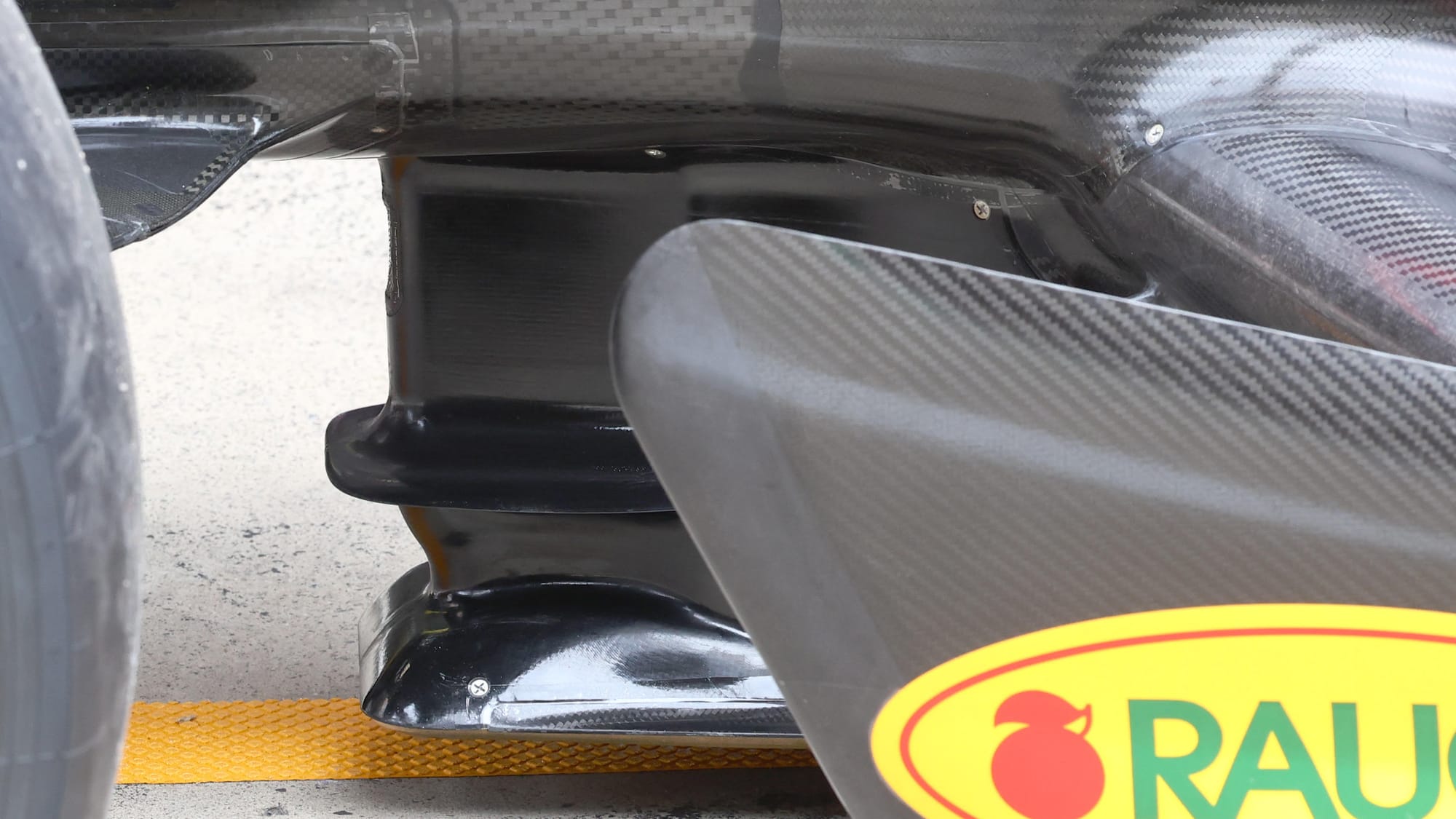
However, there is no downward load test in this area that the teams have to pass.
What I would be looking at is another light spring that can be overcome by the low pressure underneath that section of the floor, which is close to the ground, and the load produced by that small wing section on the keel section of the bib support shroud.

If that load was enough to overcome that spring load holding it up, then at low speed the bib section of the floor would be lower - let’s say five, perhaps even 10, 15, 20 millimetres, depending on how brave you were. Then, when it touched the ground, it could very easily just skim along the track surface with very little force on it but vastly improving the underfloor performance.
From what we saw on TV when the mechanic was adjusting something with a ‘tool’, they could be altering the amount of deflection, or perhaps the spring stiffness. If this was possible, then it would mean the plank and reference plane were not flat (as illustrated by the red line) as the regulations sort of require (that requirement illustrated by the blue line).
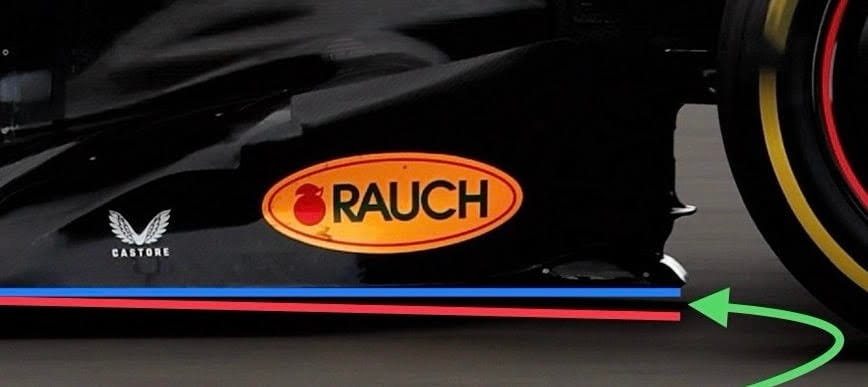
This would mean that the bib section would be lower and could flex upwards as the car gap to the ground decreases before getting to its upward stop, which is the position for which the FIA would apply its upward load test.
And this would mean that the underfloor bib area would/could produce more downforce from this area being closer to the ground at low speeds, reducing understeer while the load builds up. As a consequence, you wouldn’t have to run as low a front ride height or as soft a front suspension set-up - and also the load from the bib area would be much more consistent at varying car ride heights.
This would be because the bib would be able to follow the track surface by maintaining its gap to the track surface more consistently.
It would also allow a team to run the car that little bit higher in qualifying as the floor deflection downward would compensate for that. So when running heavy on fuel, the plank wear would not be critical.
All in all, it’s not unlike the twin-chassis Lotus 88, famously banned from competing.
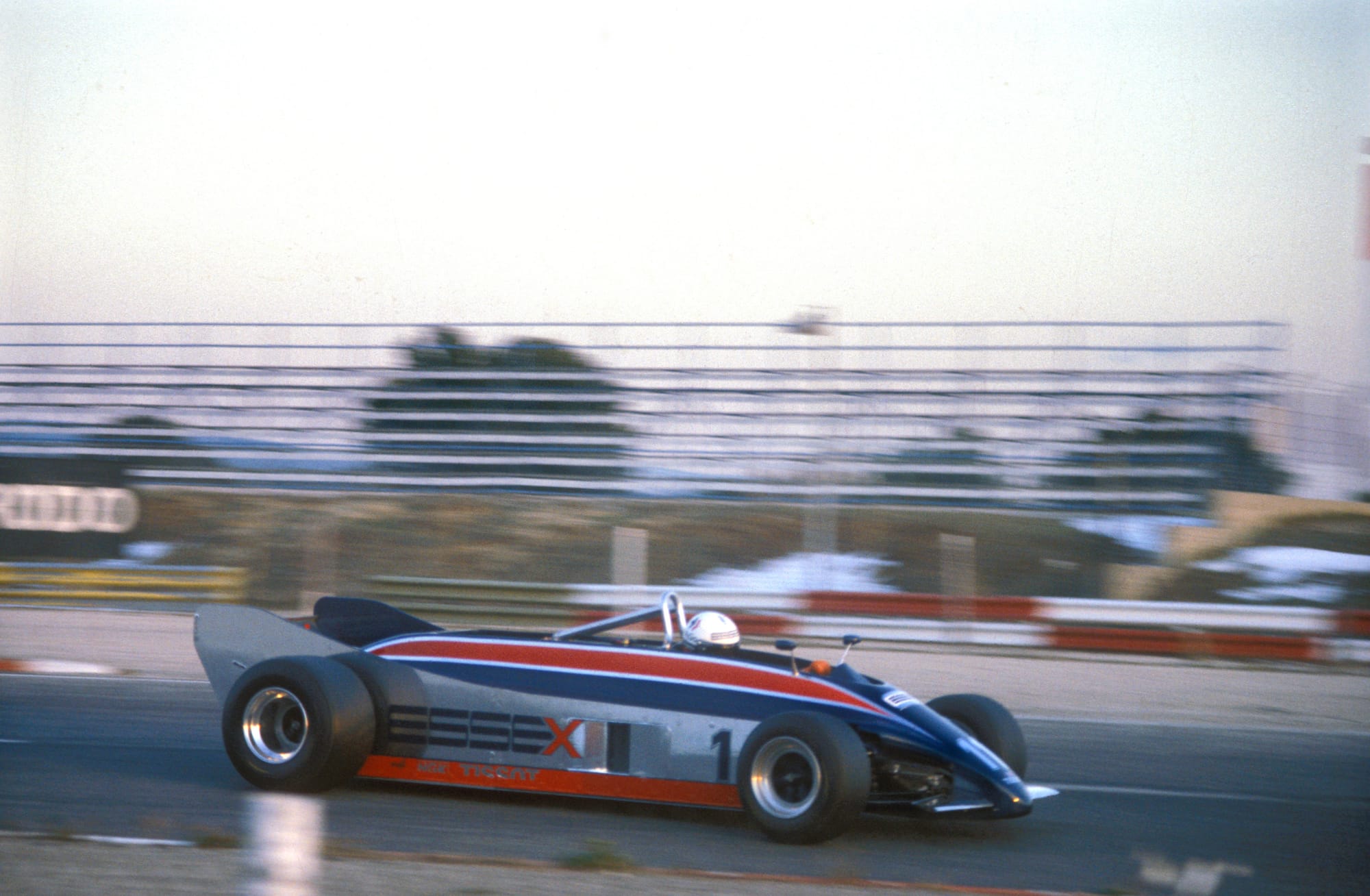
The design intended to separate the sprung chassis which carried all the mechanical components and the aerodynamic surfaces that generated the downforce.
It was effectively intended to replace the sliding skirts by allowing the aerodynamic surfaces to get closer to the ground without running a very-very stiff set-up.

